Beyond its spiritual uses, the Bible is a good source of archaeological and historical documentation.
However, many Christians are conspicuously unaware of geopolitical history not overtly expressed in the Bible. Specifically, they’re often well-educated about the times before ~1000 BC and between 4 and 33 AD.
For the sake of thoroughness, every Christian should eventually be at least moderately aware of Israel’s geographical history.
Ancient Times
The first promise given to Abraham has a greater reach, and simply says God will make Abram a great nation (Genesis 12:1-3).
- The promises about blessings and curses very well may apply to Christians, at least to some extent (John 15:1-8).
- However, those promises aren’t completely transferable (Numbers 24:2-9).
The second promise given to Abraham, however, was for a son and a proper nation with geographical boundaries (Genesis 15:18-19).
- This was approximately 1875 BC.
- He was promised to take over the land of the Kenites, Kennizzites, Kadmonites, Hittites, Perizzites, Rephaites, Amorites, Canaanites, Girgashites, and Jebusites.

It’s worth noting in our GPS-laden culture, across almost any map before the 18th century and Age of Exploration, that territory wasn’t precisely stated according to mileage and measurements, and used landmarks instead. It’s also worth noting that ancient society’s years always have a 5-20 year margin of error.
However, this never actualized into anything until much later, around 1406-1405 BC with Joshua conquering the land (Joshua 6-22).
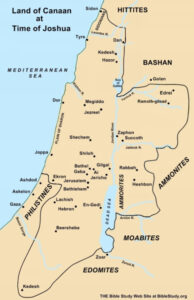
It’s reasonable to assume that this was the realistic high-point of Israel’s geography. After Joshua, no further land was taken.
The geography of Israel moved around a bit for a long while,
Not much changed in the central government for about 3.5 centuries. Their organization could be called a federal hegemony, with God (through the Levitical priesthood) running the nation, and occasional judges or prophets to carry out God’s actions or messages.
Israel’s Fall
In 1043 BC, Saul was crowned as Israel’s first king, officially converting the kingdom to a monarchy. This persisted until 931 BC, when Rehoboam’s rebellion divided Israel into the kingdoms of Israel and Judah (1 Kings 12-13).
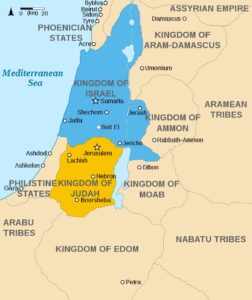
Shortly later, around 995 BC, Solomon built the First Temple (2 Chronicles 3:1-2).
Around 727-722 BC, during Isaiah’s time, the Assyrians conquered Israel.
- They conquered Naphtali and the Israelite tribes east of the Jordan River first (2 Kings 15:29, 1 Chronicles 5:26).
- A few years later, they took over the rest of Israel’s kingdom, with the survivors sent into exile and the Assyrians settling the land (2 Kings 17).
Around 680 BC, the Assyrians moved their attention to Judah and attacked all their fortified cities, though Jerusalem was not part of it (Isaiah 36:1).
- By this point, “Israel” was essentially the city of Jerusalem.
In 608 BC, the Egyptians captured king Jehoahaz, then appointed another son of the previous king, changed his name, and required Jerusalem to pay them tribute (2 Kings 23:31-35).
Around 595 BC, Nebuchadnezzar of Babylon conquered Judah (Jeremiah 52).
- The Jews rebelled, and were able to wrestle control back for a few years.
- In 586, Babylon took out any opposition, destroyed their temple and took the remaining Jews into exile.
- At this point, any Hebrew leadership effectively served as a thrall for their reigning empire.
- Most of the story involving Daniel and his friends come from post-exile (Daniel 1).
Changing Ownership
In 539 BC, Cyrus the Persian conquered Babylon, and gave free passage for Judeans to return to their land (Ezra 1-6).
- Zerubbabel built the Second Temple at this time, but it was radically inferior to the First Temple’s glory until centuries later.
- The Hebrew Torah was canonized at this point, and began Rabbinic Judaism (i.e., mainstream Judaism).
Around 450 BC, Nehemiah rebuilt a wall around Jerusalem and reinstituted Hebrew law (Nehemiah 1-13).
Somewhere in the 4th century BC, the term for the region was coined as “Palestine”, and typically included the larger region of Syria and Jordan. Its etymology may be tied to the word “Philistia”, land of the Philistines.
In 332 BC, Alexander the Great of Macedon conquered the region, meaning Israel was part of Macedonia.
After Alexander’s death in 323 BC, Israel was split in half between the Ptolemaic empire and the Seleucid empire, in the broader region of Coele-Syria.

In 167 BC, some Jewish rebels called the Maccabees were able to establish the Maccabean Revolt, which led to the Hasmonean dynasty.
- The revolt came from one of the altars of the Second Temple being dedicated to the worship of Zeus, including sacrificing a pig on the Jewish altar.
- Around this time in 150 BC, an Essene sect established a monastery at Qumran on the edge of the Dead Sea.
- It took some fighting, but they became a fully independent kingdom from 110-37 BC, and heavily reduced the adoption of Greek culture (Hellenism).
- However, this was not a pleasant time, and there was a particularly devastating Hasmonean civil war from 67-63 BC involving claims to the Jewish crown.

Owned by Rome
Rome invaded Palestine in 63 BC, starting with an intervention in the Hasmonean civil war.
- Rome established peace through ruthless suppression of all dissent.
- Herod I, or Herod the Great, was an Edomite/Jewish-heritage vassal for the Roman Empire, established over the Roman province of Judaea in 47 BC to prevent any developing sentiments toward the Parthian empire.
- The Second Temple renovations began in 18 BC and were completed in the year 28 AD, making it dramatically better than before.
- At the time of Jesus, Rome completely controlled Israel.

It’s worth noting that Jesus’ somewhat-cryptic sayings had tremendous political implications, depending on who heard it.
- The Roman leadership were concerned about an uprising, since the Jews had had a pattern of not recognizing the Caesar as one of the gods (since they were monotheistic).
- The Jewish leadership were very nervous, since it risked Rome attacking the Hebrew leadership in retaliation if they agreed with any of it.
- Rebellious and insurrectionist thinkers weren’t happy with the idea, since he advocated for not fighting against your oppressors (Matthew 5:38-47).
- Everyday people were quite engaged with him, since he taught about a uniquely different way of thinking than the Romanized/Hellenistic thinking they had been exposed to.
The First Jewish-Roman War was in 66-73 was a strictly nationalist rebellion, meant to establish an independent Judean state.
- During that war, Titus completely dismantled the Second Temple in 70 AD except for the Western Wall (aka the Wailing Wall), and Rabbinic Judaism became the standard religion for the Hebrew people from then onward.
The Kitos War in 115-117 was an ethnic/religious conflict, which also failed.
The Bar Kokhba Revolt in 132-136 was another nationalist rebellion.
- It’s debatable what happened, but it was possibly in response to Roman-style cultural appropriation (e.g., banning circumcision, renaming Jerusalem to “Aelia Capitolina”).
- Jews were expelled from Jerusalem at this time, and the name was changed.
Starting in 312, the Roman emperor Constantine became a Christian, and declared Christianity to be the official religion of Rome.
- Laws were made against Jews, but life continued onward, with Judea being the center of Christian culture instead of a part of Roman pagan culture, and the Jews still forbidden to come to Aelia Capitolina.
Between 406 and 455 barbarians invaded an already-weakened Roman Empire, throwing the entire region into chaos.
- The complete end of the Roman Empire finalized in 476 with emperor Romulus Augustus abdicating his throne and being supplanted by Odoacer, ruler of Italy.
- The Byzantine Empire, or Eastern Roman Empire, persisted in controlling Israel for a few more centuries.
- Aelia Capitolina was renamed back to Jerusalem as part of the territory of Palaestina Prima.
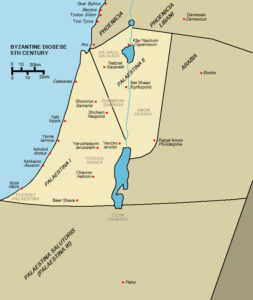
The Samaritan revolts between 484 and 573 were launched by the Samaritans against the Eastern Roman Empire.
- There was a lot of violence on both sides, and the Samaritan population dramatically dropped from the conflicts, making Christians the only dominant group in Palaestina Prima for decades.
The Sasanian Empire was able to take Jerusalem from the Eastern Roman Empire and Heraclius in 614.

However, in 629, Heraclius was able to reclaim Jerusalem, though his success didn’t last long.
Owned by Muslims
In 622, Mohammed established the Moslem religion of Islam, based out of Mecca. Shortly after his death in 632, the Rashidun Caliphate was established.
- The Siege of Jerusalem was during 636-637, and the Muslims successfully took over Palestine.
- After the Caliphate’s establishment, Hebrews were permitted to return to Jerusalem.
- Later, around 661, the Ummayyad Caliphate took over the Rashidun Caliphate’s territory, and expanded it further.
- Starting in 688, the Dome of the Rock was built on the Temple Mount as part of the Al-Aqsa Mosque, which firmly complicated Judeo-Muslim-Christian relations from then onward.
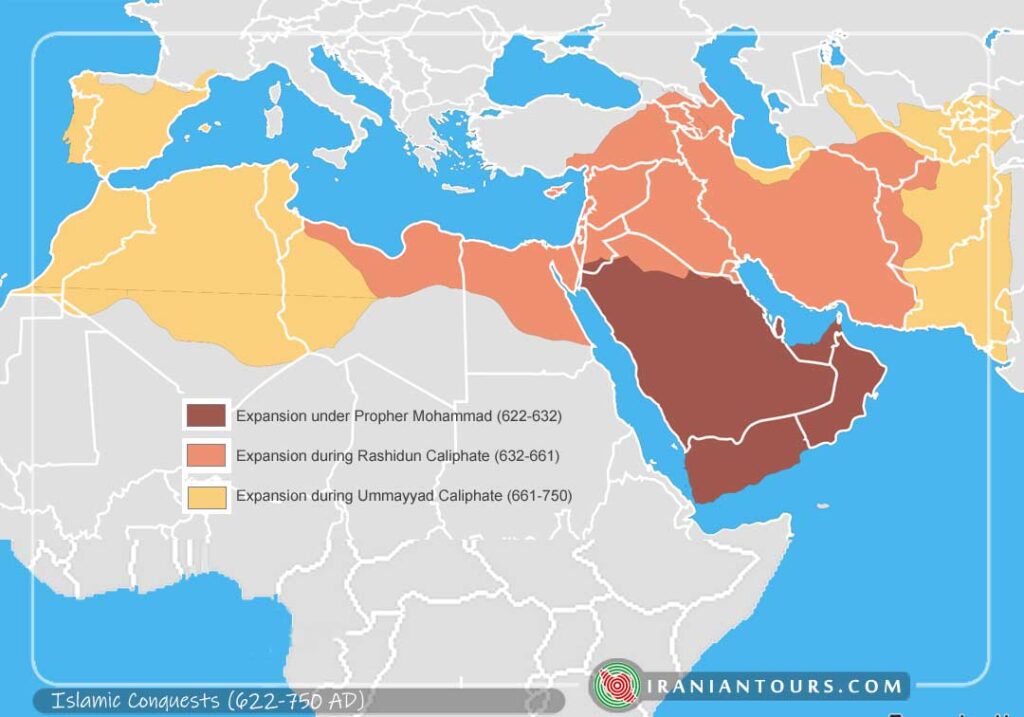
It’s worth noting that Jews were initially not completely apprehensive of Muslim conquest.
- Jews were somewhat persecuted under Christian rule as the denier of Jesus as Messiah, and it created many severe conflicts.
- By contrast, Muslims gave Jews at least some freedom of religious practice at the expense of most other civil liberties, and only created mandatory conversions for polytheistic beliefs.
Around the late-740s, there was a lot of in-fighting within the Umayyad Caliphate, which ended in the formation of the Abbasid Caliphate.
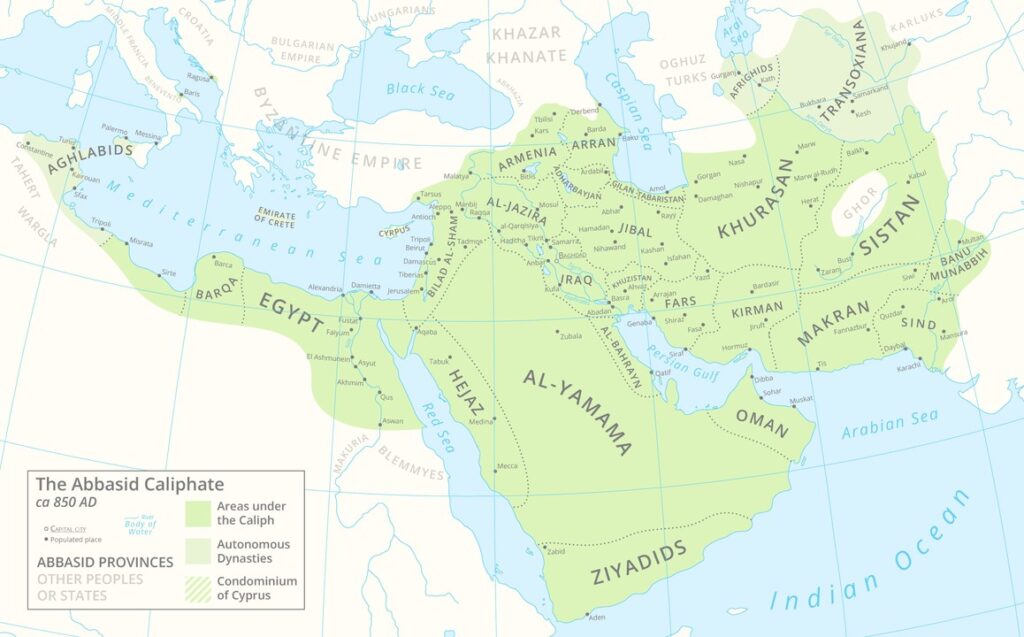
Somewhere around the year 1000, the Fatimid Caliphate took over Palestine.
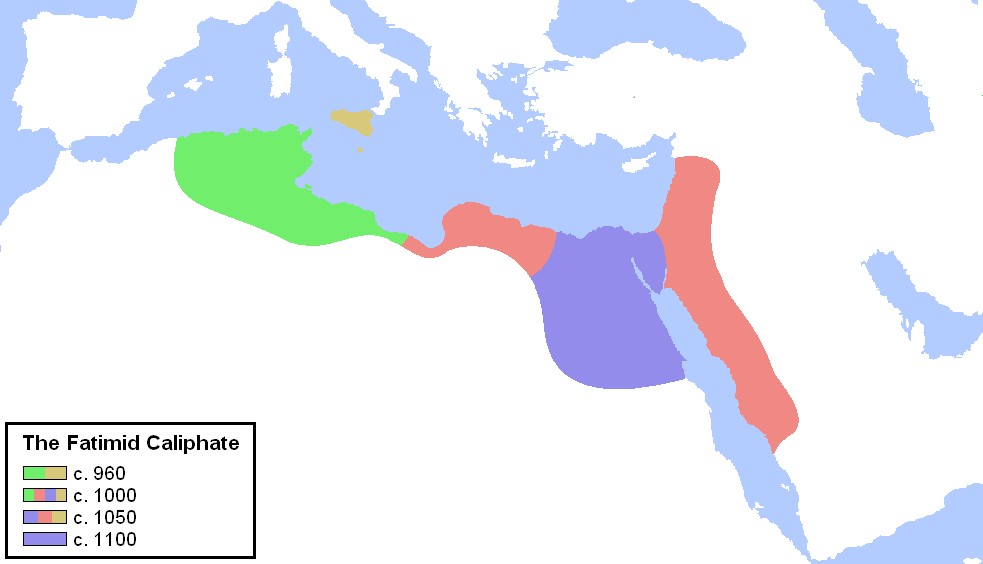
Throughout all this conflict, the population of the area dramatically decreased, from about 1 million down to 300,000.
Sometime around the late 1070s, the Seljuk Empire conquered Palestine and persecuted Christians.
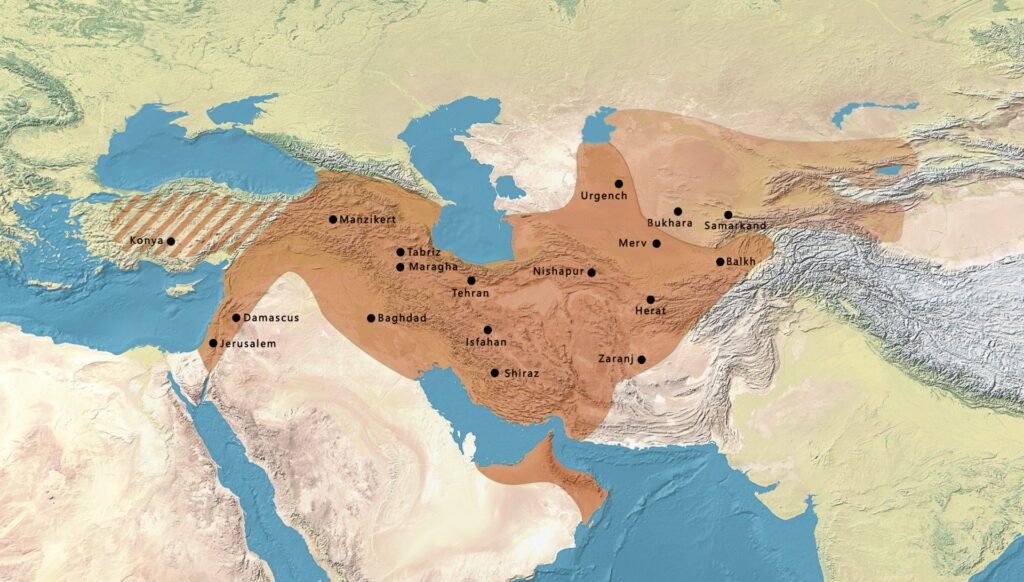
Owned by Christians
In response to the Seljuks, the Catholic Church organizes the First Crusade in 1096 and takes back the territory, slaughtering Jews and Muslims on the way to Jerusalem.
- The Catholics established four Crusader states, or Outremeer, in 1098.
- The Kingdom of Jerusalem, or Latin Kingdom of Jerusalem, was the region that covered Israel, the West Bank, Gaza Strip, Jordan, and adjacent areas.

Owned by Muslims
In 1171, Saladin abolished the Fatimid Caliphate of Egypt and established the Sultanate of Egypt.

Saladin defeated the Crusader states in the Battle of Hattin in 1187, but the Crusaders regained control to permit pilgrimages in the early 1190s.
There is a lot of back-and-forth about this period of time, and much of it may be lost to history.
The Mamluk Sultanate pushed out Christian influence and solidified Muslim rule in 1291.
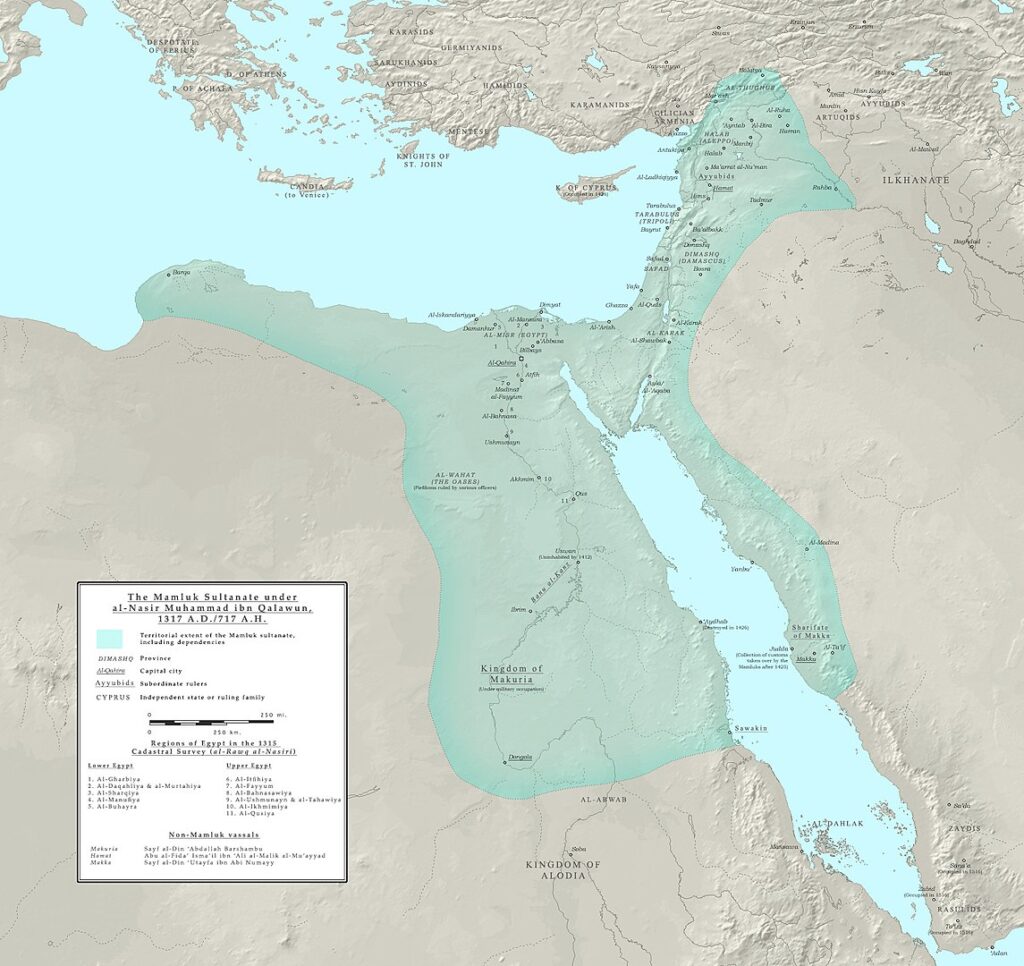
In 1516, the Ottoman Empire took over the region.
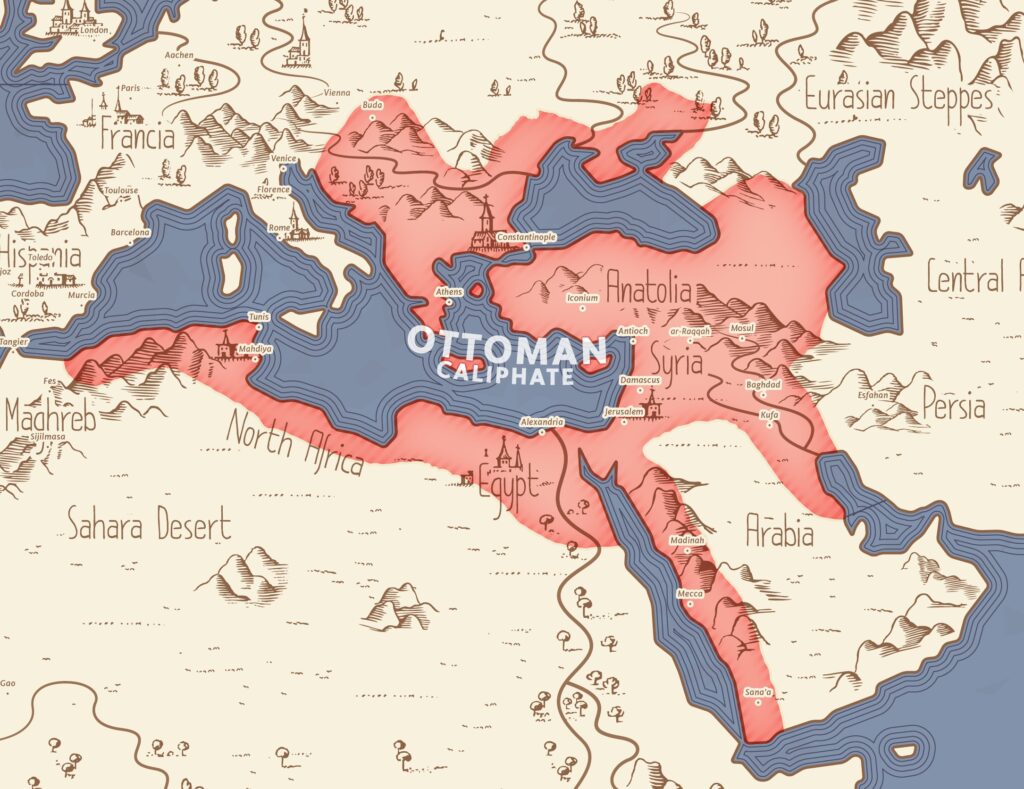
In 1768, a local Arab Sheikh Zahir Al-Umar created an Emirate in Galilee.
- While the Ottomans couldn’t discredit him, they regained control after he died in 1775.
In 1799, the Ottomans successfully deterred Napoleon from advancing into Palestine.
In 1834, Palestinian Arab peasants revolted over conscription and tax policies under Muhammad Ali.
- The revolt was suppressed, but Muhammad Ali needed British support to regain control in 1840.
The People Come Back
Up to 1881, the Jewish people were scattered across the world, with a relatively predictable pattern:
- Settle in a nation.
- Acquire power over time.
- Get driven out of their new home once they’ve acquired enough wealth and power to terrify their neighbors.
There are several potential contributors to their relative success wherever they’ve gone:
- Their worship and devotion to God as they understand Him, which at the very least creates a practical type of wisdom/shrewdness.
- The culture surrounding their religious faith is very effective at money management, often because they’ve been forbidden to manage other forms of power.
- God, in whatever capacity, blesses them miraculously.
While Zionism among Judaism had always persisted since their first exile, the late 19th century was the beginning of them actually returning to their ancestral homeland (Isaiah 11:11-12).
The First Aliyah was the first major wave of immigration between 1881 and 1903.
- In 1881, Russia established pogroms that systematically attacked Jewish communities.
- The First Zionist Congress in 1897 was held in Basel, Switzerland as an attempt to establish a new homeland for Jewish people in Palestine, but the Ottoman Empire fiercely opposed the idea.
The Second Aliyah was the second major wave of immigration between 1904 and 1914, up to the First World War.
- The motivations came from various pogroms, including the Kishinev pogrom and 1905’s Russian Revolution.
- Their mass migration led to the formation of the settlement (and later city) of Tel Aviv in 1909.
During the Great World War in 1917, Britain needed allies, so Arthur Balfour sent the Balfour Declaration to Lord Rothschild, a British Jew.
- It essentially stated that Britain would create a Jewish “national home” in Palestine, in exchange for their support. They also promised independence to the Arab nations in return for their support in overthrowing the Ottoman Empire.
In 1920, after the war, the territory was split between Britain and France, and the British-owned mandate became “Mandatory Palestine” while France owned Syria to the north.
- The 1920 Nebi Musa riots lasted 4 days as a reaction to the British rule, with a few hundred people injured.

The League of Nations granted Britain’s Mandate in 1922 that included the Balfour Declaration, but also gave similar provisions for Arab Palestinians.
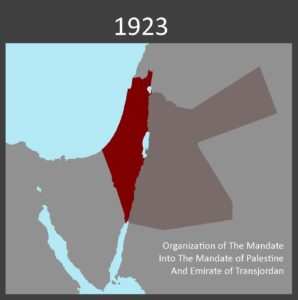
The Third Aliyah was between 1919 right after the war, up to 1923, when Palestine suffered an economic crisis.
- Russia’s October Revolution, antisemitic pogroms in Eastern Europe, and the Balfour Declaration all contributed to the move.
The Fourth Aliyah was between 1924 and 1928.
- It’s mostly like the Third Aliyah, but with some differences, such as most of the Jews coming from Poland.
- There was rapid urban development, but also an economic crisis that drove some of them out of Palestine.
The Fifth Aliyah was between 1929 and 1939, up to the Second World War.
- The beginning of it was part of the 1929 Palestine riots, one of the most significant involving the Hebron massacre that killed ~68 Jews.
- Most of the movement was from racial persecution by Nazi Germany, starting in 1933.
- Many of the Jews started migrating illegally as well.
- Near the back end of it, there was a 1936-1939 Arab Revolt.
In 1936, the Peel Commission was appointed to create an Arab-Jewish partition solution, but the Arabs rejected it.

In 1939, the British government held the London Conference to plan the end of the Mandate and its future government.
- The meetings were in separate rooms with dialogue in-between, since the Arab delegation refused to sit in the same room as the Jewish delegation.
- They never came to any agreement, but the British government produced the 1939 White Paper as the government-imposed solution.
The 1939 White Paper was the first successful implementation of what has been known as the “two-state solution”.
- The solution called for a Jewish national home in an independent Palestinian state within 10 years, and limited Jewish immigration to 75,000 for 5 years, with further immigration determined by the Arab majority.
- Jews were only allowed to buy land in 5% of the Mandate.
- This solution did not meet the Arab representatives’ demands.
From 1939, the British mandatory forces faced issues from several angles:
- The Bricha, or Bericha, was an underground organized effort to help Jews escape from post-World War II Europe, in violation of the 1939 White Paper.
- Starting in 1944, Zionist paramilitary groups sabotaged British forces, all the way until 1948. Among other efforts, the Irgun faction bombed British administrative headquarters, derailed trains, and captured military officers.
- Arab groups were very dissatisfied with Britain’s failure to regulate immigration.
- Neither side was happy with the fact that Britain technically owned most of the land.

At the same time, Nazi Germany’s empire systematically killed over 6 million Jews across Europe in the Holocaust.
- The Aliyah Bet involved tens of thousands of Jewish refugees attempting to enter Palestine by ship.
After World War II, in 1947, British forces in Palestine continued turning away concentration camp refugees.
- They couldn’t reconcile with the Jews because the Jews insisted on having a separate Jewish state, citing the Balfour Declaration.
- They couldn’t reconcile with the Arabs because the Arabs refused to acknowledge any Jewish state.
- Britain referred the Palestine issue to the newly formed United Nations.
In September 1947, the UN replaced the British Mandate with an independent Arab state, independent Jewish state, and the City of Jerusalem under an International Trusteeship System.
- At the same time, 2 British soldiers had been captured as hostages against 3 Israeli Irgun members awaiting execution. Irgun hung their corpses from trees after the 3 Irgun executions, and it created a gigantic outrage in the UK.
Britain left Palestine for 4 reasons:
- Jewish and Arab negotiators weren’t willing to compromise over the matter of a Jewish state in Palestine.
- Stationing a large garrison in Palestine to deal with Jewish insurgents is expensive.
- As a whole, the Jews may rebel on a wider scale, which would cause more trouble.
- There was a risk of an Arab rebellion, and Britain was already struggling economically after World War II.
In November 1947, the UN adopted Resolution 181, called the Plan of Partition with Economic Union.
- It assigned 55-65% of the land to the Jews.
- About 1/3 of Palestine’s population and 6-7% of its land ownership was Jewish.
- The majority of the population was Arab and owned about 20% of the land.
- Most of the land was owned by the Mandate or foreign landowners.
- Arabs rejected it, and any other plan that involved a partition plan.
- In response, the Arab League and Arab Higher Committee of Palestine involved a 3-day strike, with riots breaking out, and the entire situation devolved into a civil war.

The British Mandate was announced to end May 1948, and Britain would evacuate.
- About 85% of the Arab Palestinians left, though that’s a very politicized discussion over what happened.
- The Arabs would say they were ethnically cleansed to transform the land into a Jewish-majority state.
- The Jews would say that the Israel leadership desperately begged them to stay, but they were commanded by their leadership to leave.
A Hated Nation
On May 14 in 1948, one day before the Mandate was removed, David Ben-Gurion declared the State of Israel’s existence.
- The next day, Egypt, Syria, Transjordan, and Iraq entered former Mandatory Palestine to start the 1948 Arab-Israeli War.
- They were joined by contingents from Yemen, Morocco, Saudi Arabia, and Sudan.
- The Arabs would say the invasion was to restore law and order, and to prevent further bloodshed.
- The Jews would say they were worried the invading Arab armies had the intent to slaughter them.
- The USA and Russia immediately accepted Israel’s status, but Britain didn’t.
With the formation of a new Jewish state, hundreds of thousands of Jews migrated to Israel, even while the war was transpiring.
After a year of fighting, they declared a ceasefire called the Green Line, or the 1949 Armistice border.
- The most notable differences come from them losing the Gaza Strip (in the southwest) and the West Bank (on the east).
- Eilat and the Negev were captured during the war.

Israel was admitted as a member of the UN by majority vote on May 11 in 1949.
The immigration of Jews was continuous, and the population dramatically exploded for decades afterward.
In 1964, The Palestine Liberation Organization (PLO) was founded, with the original intent to establish an Arab state over former Mandatory Palestine.
In 1967, Egypt mustered an army near Israel’s border, expelled UN peacekeepers, and blocked Israel’s access to the Red Sea.
- Other Arab states mobilized their forces as well, and Israel saw it as a casus belli to strike pre-emptively.
- On June 6, 1967, Israel captured and occupied Jordan’s West Bank, the Gaza Strip and Sinai Peninsula, and Syria’s Golan Heights. It concluded on June 10, and was called the Six-Day War for that reason.
The 1967 Arab League Summit issued the Khartoum Resolution on September 1st, which was renowned for its “Three Noes” in the 3rd paragraph:
- “…no peace with Israel, no recognition of Israel, no negotiations with it, …”
- For 3 years, Israel fought Egypt, Jordan, the PLO, and their allies over the conflict, known as the War of Attrition.
The Six-Day War meant that the USSR broke diplomatic relations with Israel, and it led to increased antisemitic propaganda.
- The 1970s Soviet Union aliyah was the mass migration of Jews once the Soviet Union lifted its ban on Jewish emigration in 1971.
All through the early 1970s, Arab groups launched waves of attacks against Israel and Jewish targets internationally, one of the most notable being the massacre of Israeli athletes at the 1972 Summer Olympics.
In 1973, while Jews were observing Yom Kippur on October 6th, Egyptian and Syrian armies launched a surprise attack in the Golan Heights and Sinai Peninsula.
- The Yom Kippur War successfully concluded on October 25th, but claimed many lives in the process.
In 1976, an airliner was hijacked during its flight from Israel to France, but Israeli commandos were able to rescue 102 of the 106 hostages.
In 1978 and 1979, the Israeli prime minister Begin and Egyptian president Sadat signed the Camp David Accords and Egypt-Israel peace treaty, respectively.
- The agreement was for Israel to withdraw from the Sinai Peninsula and enter negotiations over autonomy for Arabs in the West Bank and Gaza Strip.
- This didn’t work for anyone else, though, and Lebanon attacked in March 1978.
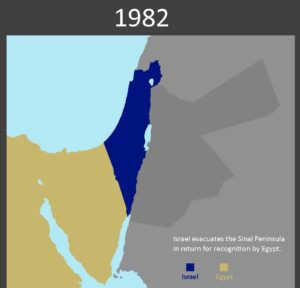
In 1980, Begin’s government gave incentives for Israelis to settle in the West Bank, which created friction with Arabs in the area.
- Basic Law: Jerusalem, Capital of Israel was passed, which expanded Jerusalem’s about 27 square miles eastward.
- This ignited international controversy, including UN General Assembly Resolutions 2253 and 2254.
In 1981, during the Iran-Iraq War, Israel’s air force destroyed Iraq’s sole nuclear reactor under construction outside Baghdad.
In 1982, Israel invaded Lebanon to destroy the PLO’s bases of operation.
- It took 6 days and Israel decisively defeated the Syrians.
- The Kahan Commission was conducted by the Israeli government and condemned the Sabra and Shatila massacre.
In 1985, Israel responded to an attack in Cyprus by bombing the PLO headquarters in Tunisia.
The First Intifada between 1987 and 1993 was a sustained series of protests and violent riots carried out by Arabs in Israel-occupied territories.
- The resentment was driven by the twenty-year anniversary of the 1967 war.
- The anti-Israel group Hamas arose during this time.
In 1991, the Madrid Conference of 1991 attempted to resolve the Israeli-Palestinian peace process through negotiations.
- As an outgrowth of the dialogue, the Oslo I Accord began in 1993 as an attempt to establish a framework to resolve the conflict.
- The Oslo Accords began the discussion of partitions that gave exclusive regional control to Arabs or Jews.
- At that point, Israel recognized the PLO’s authority over the West Bank and Gaza Strip.
- At that point, the PLO and Arab nations shifted from complete anti-Zionism to a two-state solution (i.e., Arabs existing independently in the West Bank and Gaza).

From 1993 onward, the PLO used its recognized status to support acts of terrorism.
In 2000, the Israeli prime minister made a controversial visit to the Temple Mount, and the PLO triggered a Second Intifada that would last for four and a half years.
- Israel offered the PLO recognition of a Palestinian state in all of Gaza and 94% of the West Bank with East Jerusalem as its capital, but they rejected it.
- The most common feature of this attempt involved frequent suicide bombings, which severely affected civilian life.
- In response to the intifada, Israel began constructing a wall around the West Bank, which was declared illegal by the International Court of Justice.
In 2005, to appease the international community, Israel removed all its settlements from the Gaza Strip, but kept control of its borders.
In 2006, the Palestinian people in Gaza democratically voted Hamas to run its government.
- Ever since then, Palestine has not had an election, and Hamas has been a known terrorist group.
Between 2010 and 2021, Hamas has launched periodic rocket attacks at Israel, as well as using tunnels to transfer weapons and supplies.
- Whenever Israel has attacked, Hamas has used Gazan civilians as human shields.
In 2018, the US moved its embassy from Tel Aviv to Jerusalem.
In 2023, Hamas violently attacked and killed hundreds of Jews, provoking Israel to retaliate.
Conclusion
There is no “Israeli-Palestinian conflict”, at least not by those words.
- “Palestine” is simply a geographical region.
- There is certainly a Jewish-Muslim conflict, and devout Muslims who practice their religion want the Jews either dead or a permanently lesser class of citizen.
- There’s a clear Israeli-Arab conflict, which is a political battle involving people who are almost all genealogical descendants of Abraham.
From this point, the pattern will likely play itself out in mostly the same way:
- Either Jews are persecuted or attacked.
- They materially advance an agenda that gets them farther than when they started.
- Arabs are unwilling to negotiate.
- Eventually, Arabs will relent after a lot of fighting.
- Israel will make a concession that they’re not coming out ahead on, in the spirit of goodwill.
- The Arab nation will still hate Israel.
The world seems to hate Israel, however, and across the lens of history that narrative will be an ever-losing battle:
- “Jews shouldn’t exist.”
- “Israel shouldn’t exist.”
- “Israel can’t be a sovereign nation.”
- “Israel can’t trade with other nations.”
Christians are not responsible for involving themselves with the politics of Israel’s national status.
- The crazy events we’re experiencing are technically none of our business (Matthew 24:3-8).
- Contrary to Western political dialogue, we should simply expect persecution, evil, and hardship, in all its forms (Matthew 24:9-14).
- Irrespective of dispensational theology, the Jews certainly were God’s people, but that doesn’t mean Christians have any superiority over them in God’s sight (Romans 11).
- Unlike Christians’ predictions of Jesus returning, the Jewish majority is secular, and they’ve adopted a strange adaptation of the covenant with Noah (Genesis 9:1-17) called Noahidism, which essentially takes on a much more political approach revolving around the Third Temple.
- God is faithful enough that the Hebrew people will never be fully destroyed (Revelation 7), but that says nothing directly about the political entity we call Israel today.
- Jesus loves every single human being, which includes all Jews and all Arabs, and Christians are responsible to love their enemies in the same way.
While it may seem contradictory, it’s easy enough for all Christians to generally do the following:
- Denounce all forms of violence or terrorism.
- Support all forms of constructive activities that provide for and give meaning to specific people groups.
- Trust that we don’t know many things, and rest in that non-knowledge because we know that God knows.